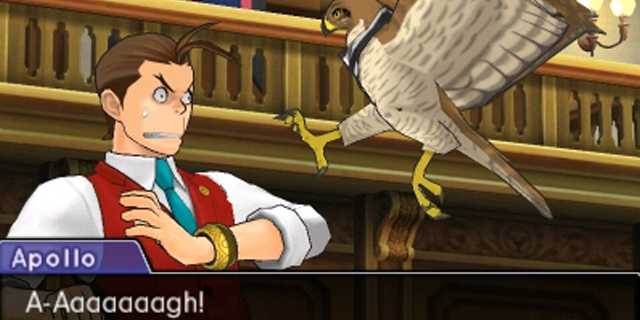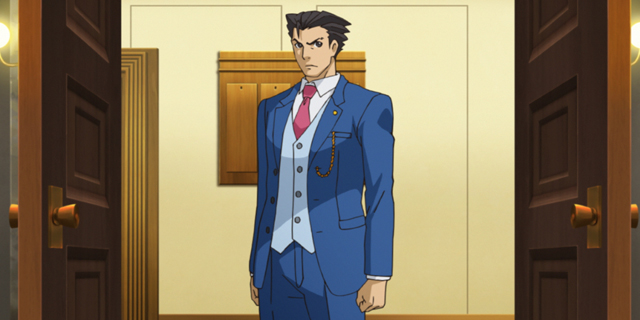
There is far more that can be done with video games than simply challenging reflexes. One of the best examples of this realm of possibility is Capcom’s Ace Attorney, a series that, now going into its third generation on Nintendo handhelds, brings with it a legacy of brain-bending mysteries and colorful characters. By offering something so different from the standard fare, Ace Attorney has been able to carve out a viable niche and ensure its place as a landmark of the adventure genre.
Structurally, Ace Attorney: Dual Destinies uses the same gameplay conventions as the previous games, with some additional polishes and tweaks to smooth things over and make the experience all the more enjoyable. In particular, you can now review old text that has been said, as is common in many visual novels. This is helpful for picking up on nuances in conversation that can be critical to solving a case. Even on a superficial level, it is nice to be able to look at past text to get a grasp of characters’ personalities.
Another minor (yet welcome) feature is the ability to save your game via a pop-up window. It’s mainly a minor aesthetic change, but any Ace Attorney fan will tell you that unless you’re as sharp as the spiky-haired defender of justice himself, then you’re eventually going to have to figure a stumper of a puzzle out through trial and error.

The biggest addition to the game’s courtroom proceedings is the ability to sense emotional shifts in a witness’ voice to pry further into their testimony. While this feature is arguably just adding a layer of interaction to something that was already present in previous games, it does add a different methodology to how you approach each puzzle.
Given that the Ace Attorney series has now officially moved generations, the visuals have taken a sizable leap to utilize the 3DS’ extra muscle. Most notably, the game has now moved over to polygonal (and stereoscopic) 3D to represent its characters and world. While the sprite art of previous games was masterfully made, the transition to 3D was handled so well that it’s hard not to fall in love with the new style. I was initially worried that the 3D models would lose a lot of their lively charm, but luckily those fears were unfounded. The 3D models feel just as fun and energetic as their sprite counterparts, thanks to the use of cartoonish, deliberate animations and over-the-top expressions. It really does feel just like the sprites just got an extra dimension.
The character and world design is still as colorful and inviting as ever, and makes the environments into places you really want to explore and spend time in. The use of camera angles in the game’s more dramatic moments is also a notable new graphical flourish, and one that can really add to the tension of a moment.

The Ace Attorney series has a lot to live up to in terms of catchy, memorable tunes, and Dual Destinies doesn’t disappoint in the slightest. It features a succession of melody-driven tunes that you’ll probably find yourself whistling throughout the day. The sound effects are essentially the same as the ones that have remained in the series since inception, and given that they’re all still contextally appropriate and pleasant, there’s no problem with that.
Phoenix Wright: Ace Attorney: Dual Destinies is a rock-solid game that stands on the shoulders of giants, and is all the stronger for it. Its almost-exclusive reliance on murder cases is starting to get ridiculous, but since the game is always able to come up with imaginative and dramatic framing devices for them, that’s not as big of an issue as it could be. Dual Destinies is everything the series always has been, wrapped up in a shiny next-gen package.
Pros: Solid game engine, lively visuals, dramatic story
Cons: Main new gimmick to the game is mostly superficial



















